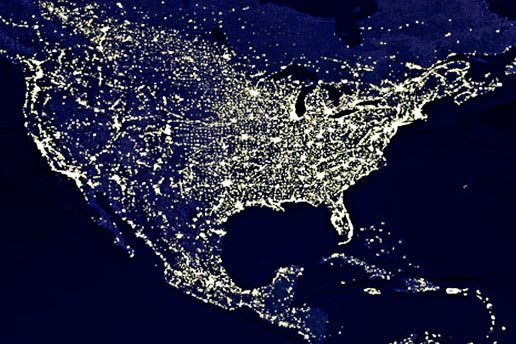
The “IIJA” or Infrastructure Investment and Jobs Act is the popular Senate bill that is allocating $550 billion in new infrastructure spending, increasing the total (with baseline spending) to $1.2 trillion over the next eight years.

The IIJA creates provisions for “Grid Infrastructure Resilience and Reliability” in Section 40101, for which a program under the Department of Energy will be created to make grants to eligible grid entities. This program will be funded with $5 billion over five years. Grants to improve grid resiliency will be awarded based on their perceived value. This funding is a critical component of the $73 billion total the Senate’s Bill brings to power infrastructure. The remaining segments of the $73 billion will be split amongst different areas like: research and development, transmission projects, cybersecurity, supply chains, smart grid technologies and demonstration projects.
Grid Resiliency vs Reliability
To understand what deliverables this program will produce it is important to understand the difference between resilience and reliability. Resiliency and reliability share many characteristics, but ultimately their scopes differ.
Reliability is designing, operating, and maintaining the electrical system such that it provides safe and dependable electricity. For the end user, this means the electricity supply is consistent and always available. Within the operation of the grid, this means the grid is ready for a certain ‘n’ number of ‘grid events’ such as the loss of a transmission line or generator, and is capable and able to respond in a timely manner so that there is no loss of power. The North American Electric Reliability Corporation has many procedural conditions and standards imposed on operational entities to ensure the grid is run in a reliable manner.
Resiliency focuses on the big picture, less about standardization and more on high impact events. Think natural disasters and man-made catastrophes. The grid needs to be resilient to withstand these rare but extreme cases that may present prolonged hardships and threaten the grid. Resilience is mitigating, enduring, and recovering from these events.
Both resilience and reliability have the goal of keeping the grid online, minimizing outages, preventing blackouts and prolonged outages, and recovering the grid.

What Vulnerabilities would Improved Resilience help Prevent and Mitigate?
The grid is potentially the most critical infrastructure to society that we have today. Much of the grid infrastructure is aging and there are a multitude of threats that challenge grid resilience as we move forward. Anser recommends that IIJA grid funding recipients target the following 3 areas:
A natural or human caused disaster has potential to severely cripple our energy infrastructure. For example, there are thousands of high voltage transformers across the United States that are critical assets to the ongoing operation of the grid. Many of these transformers are custom designed, have long lead times and are almost entirely produced overseas. A coordinated attack could leave the grid exposed or blacked out.
Operation and control of most of the grid is localized at control centers. These control centers have remote connections to critical assets on the grid. It is critical to maintain secure connections and control of these assets. A coordinated cyber-attack or hack could cause a major blackout and pose ongoing problems for grid operations.
Natural disasters continue to cause reliability issues, which frequently result in blackouts, putting individuals and communities in additional danger during times of crisis. The 2021 Texas power crisis left millions without power and hundreds dead. Perhaps the disaster could have been prevented if Texas had invested winterizing critical systems. California also has ongoing issues mitigating wildfires as transmission lines, conductor and fuel sources take significant resources to manage and upgrade.
Studies show climate change is increasing the frequency and intensity of extreme weather events. With that has come increases in the federal government’s fiscal exposure (1). Even now extreme weather costs billions worth of damage annually without taking the grid into account. A decade ago the Department of Energy found that power outages were cost the US economy over $70 billion annually (2). It is entirely possible the investment in our grid and power infrastructure could pay for itself.
The increasing threat of natural disasters and human created events are compounding the risk of outages and loss of the power grid. It’s critical to protect the grid against these events.
What we can expect as we move toward our 2050 climate goals
Looking toward the future will help us understand what we can do today to best prepare for tomorrow. With 2050 as that goal, we expect continued expansion and construction of renewable energy projects. As renewable’s share of generation increases, so does the need for better grid reliability and resilience as these resources are more distributed, and generation less predictable.
New and upgraded lines will be needed for increased transmission from remote generation facilities to demand centers. Electricity demand is predicted to double in the next 30 years as we set our sights on net zero. The grid needs to be resilient during this transitionary time.
Grid resiliency will be important for ongoing reliability. The variable nature of renewable generation and the distributed nature presents many problems to solve. Generation supply and demand need to be balanced constantly to produce a reliable grid, otherwise frequency is not maintained, and this will ultimately lead to blackouts if generation cannot be ramped up, brought online in time, or demand reduced. Building the resilient grid of tomorrow means addressing these issues before they can manifest.
Funding Eligibility for the Grid Infrastructure Resilience and Reliability Program
The IIJA’s Grid Infrastructure Resilience and Reliability program will provide $5 billion in grants over the next 5 years between 2022 and 2026. Funding is eligible for efforts that supplement existing resilience and hardening efforts, efforts to mitigate risks, and efforts to reduce likelihood of disruptive events. Grid entities and states can apply for program grants and the U.S Department of Energy will make awards. Priority will be given projects that generate the “greatest community benefit”.
The funding will be split 50/50 with 50% of funds allocated to direct grants to grid entities and 50% to States or Indian Tribes where by then, the States/Tribes can make grants to entities based on their own accord per an approved plan.
Eligible Entities include:
– Grid operators
– Electricity storage operators
– Electricity generators
– Distribution providers
– Fuel supplier
– Transmission Owners and Operators
Funding to states or Indian Tribes will be based off population, grid size, area, and probability of disastrous events. States that had a large number of declared emergencies or disasters over the last ten years may see more funding.
Limitations
There are some funding limits based around prior years’ resiliency spending and there are capped administrative expenses. Funds from Sec. 40101 ‘Preventing Outages and Enhancing the Resilience of the Electrical Grid’ as outlined above may not be used for building new generation, large scale battery storage or for cyber security. Different funds are set aside for cyber security in the Energy Infrastructure Resilience Framework and State Energy Security Plans sections of the Act.
Matching Grant Funds
State Entities that receive funding are required to match 15% and eligible entities are required to match 100%, except small utilities are only required to match 33% of . At least 30% of funds will be set aside for small utilities. Grantees will be required to submit biannual reports to the DOE detailing their use cases and deliverables to demonstrate increased grid resiliency.

Potential Resiliency Programs and Projects
It is important to select resiliency programs with an understanding of the scale of IIJA funds available, the climate and man-made challenges facing grid providers, and who is actually eligible to receive funds. Below is a summary of resiliency projects the IIJA highlights which are priorities for these grant awards.
- Wildfire mitigation and disaster mitigation projects such as reconducting transmission lines with insulated or covered conductor; Reducing conductor sag in pole spans; Asset monitoring; Vegetation management and surrounding fuel load management; Transmission tower and pole management programs; Replacement of ageing infrastructure and/or ageing conductor.
- Disaster mitigation; Projects focused on reduction of disruptive events and recovery and impact to the grid and recovery; Adaptive protection; Grid Modeling; Micro Grid Resilience Technologies, Resilience for Energy Storage assets
- Weatherization programs such as winterizing and weatherizing equipment for extremes in weather and mitigating their effects; Replacing infrastructure and protection from the elements.
- Monitoring and control hardening efforts
- Undergrounding of Transmission lines in disaster prone areas
- Hardening of grid assets such as substations, powerlines, generation facilities. Security upgrades, such as improved fencing, security cameras and monitoring.
